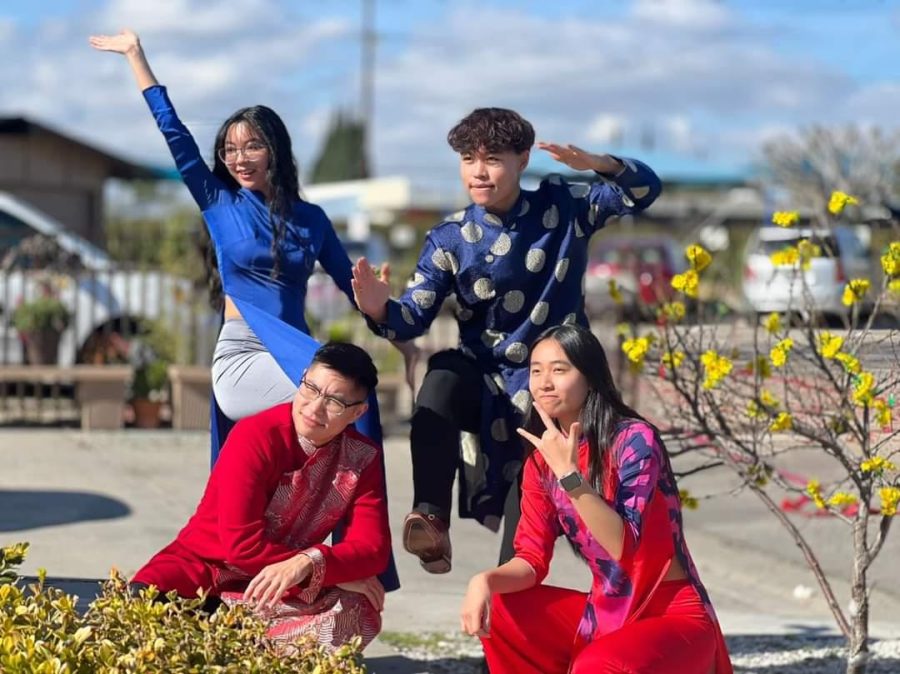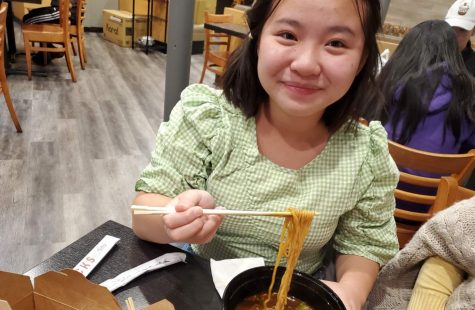Tết — New Year’s Day on steroids
January 26, 2023
Chúc mừng năm mới! Happy New Year!
I know what you’re thinking: “Happy New Year? Amanda, you’re a month off!”
But I’m not talking about New Year’s Day — I’m talking about Lunar New Year or as Vietnamese people call it: Tết.
If you asked any Vietnamese kid what their favorite holiday is, chances are they would answer Tết, and for good reason.
Tết is celebrated on different days each year because it follows the Vietnamese lunisolar calendar. The holiday, much like its Gregorian counterpart, celebrates new beginnings.
The first day of Tết was Jan. 22. That’s right. First day.
Unlike New Year’s Day, Tết lasts nine days, though most people only celebrate for three days. Think of it as New Year’s Day, but on steroids.
There are many aspects to the holiday: eating food that covers the whole table and barely leaves room for your plate, bonding with family, lighting firecrackers, watching lion dancers, paying respect to ancestors, and of course, getting lì xì (red-envelope money) from your family.
It’s no wonder that Tết stretches over several days, and with a holiday that covers so much, it can be hard to choose a favorite.
Junior Amanda Huynh says, “My favorite part of Tết is definitely gathering with my family and making food for the celebration as well as receiving lì xì from the adults and elders!”
Though I can not pinpoint my absolute favorite part of Tết, I would say it is the atmosphere. Tết is unapologetically lively and colorful. You can hear, see, and feel it.
You can hear the distinctive gongs and drums of the lion dancers in the background of every festival you go to, and your vision is flooded with red and gold decorations.
Even the clothing that people wear is vibrant; it is typical to see Vietnamese people wearing áo dài, a traditional Vietnamese garment, at festivals.
Tết is celebrated with your close family and friends, and it marks a time when the Vietnamese community gathers together.
As junior Andy Bui puts it, “Where we celebrate doesn’t really matter to us, as long as we’re together.”
But just because it is a team for a heartfelt reunion doesn’t mean the parties are boring — far from it! They are just as high-spirited as any festival and can last for hours into the night as people play games.
“I always love playing lotto (Vietnamese bingo) and bầu cua (a dice game). Everyone stays up until at least one in the morning to play, but no one ever gets tired. It’s so much fun and the whole house is filled with laughter,” sophomore Lynkim Phan says.
Every aspect of Tết is a way to connect with family and ancestors. Food is no different; friends and relatives will gather to make bánh tét and bánh chưng as a way to bond and catch up.
“For my family, it is the only time of the year that we all get together and make bánh chưng. Even if it takes a long time, I love spending time making them even if it takes an all-nighter (8 hours!) to cook,” says junior Huyen Le.
Many foods are eaten during Tết, and each person has their own favorite.
When I asked other Vietnamese students what their favorite food was, there was a wide variety: bánh nậm, bánh chưng, bánh tét, mức trái cây, and nem chua.
But, even if we can’t agree on a favorite food, there is one thing all Vietnamese kids fear: canh khổ qua (bittermelon soup). If the name doesn’t give it away, it is bitter.
It’s one of the more famous — or perhaps, infamous — dishes eaten during Tết, owing to its meaning. Khổ qua literally means “passing misery,” making it a fitting food for a holiday that centers around new beginnings and fortune.
Freshman Maggi Pham is one of the lucky ones. Pham says, “I’ve never tried it since I run away whenever my mom offers me some!”
It is not uncommon for children of immigrants to feel disconnected from their culture, and that is what makes Tết so important.
For many Vietnamese-American children, Tết connects us to our roots: the food, games, and activities center around welcoming the new year together, becoming a shared childhood experience.


